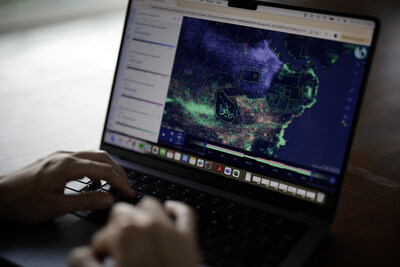
SAN JOSÉ, Costa Rica, Oct. 23, 2024 /PRNewswire/ -- The Marine Manager technological tool, developed by Global Fishing Watch (GFW), is revolutionizing marine resource protection and management in Costa Rica, Panama, Colombia, and Ecuador. By processing vast datasets-ranging from species telemetry to fishing activity-it enables enhanced safeguarding of protected marine areas.

The platform is an interactive map that utilizes artificial intelligence, big data, scientific input, and user contributions to provide a comprehensive view of the sea. This includes animal telemetry, which tracks the movements of marine species such as sharks, whales, and turtles. It also incorporates environmental layers to visualize underwater mountains, corals, and mangroves.
The platform also includes oceanographic information, such as sea temperature and oxygen concentration, to better understand how climate change affects marine ecosystems. It also monitors fishing activity to detect vessel movements and even potential illegal activities.
"Marine Manager emerges as a mega-platform that allows us to visualize all these different layers of information interactively. This enables the managers of Marine Protected Areas (MPAs) to monitor and better understand what is happening in these zones," explained Global Fishing Watch's leader for Latin America, biologist Monica Espinoza, in an interview with EFE.
"Creating an MPA is a huge step, but managing, maintaining, and monitoring them is the big task that follows. Marine Manager supports these efforts by the states," she added.
In 2004, Costa Rica, Panama, Colombia, and Ecuador created the Eastern Tropical Pacific Marine Conservation Corridor (CMAR), a unique global initiative that promotes the conservation and sustainable use of an area covering over 2 million square kilometers. These countries now use the interactive map to manage their marine resources more efficiently and in a coordinated manner.
Through the Marine Manager portal, CMAR administrators collectively identify areas of interest, improving coordination and information exchange.
This effort also supports the goals of the global 30x30 agreement, which aims to protect at least 30% of the world's oceans by 2030 to halt the rapid loss of species and protect vital ecosystems.
During the United Nations Biodiversity Conference, held from October 21 to November 1 in Cali, Colombia, CMAR countries will share their experience and success in using these technological tools to protect marine ecosystems and species.
Regional cooperation initially focused on protecting Malpelo and Gorgona Islands (Colombia), Coiba Island (Panama), the Galapagos Islands (Ecuador), and Cocos Island (Costa Rica). However, due to growing concerns about marine conservation, protection has expanded to new areas.
In recent years, the number of marine protected areas has increased from four to ten sites, with stronger safeguards and better connectivity for multiple species. This includes Colombia's Yuruparí-Malpelo Integrated Management District and Northern Pacific Lomas and Hills Integrated Management District, Costa Rica's Bicentennial Marine Management Area, and Ecuador's Hermandad Marine Reserve.
A notable success has been the management plan for Cocos Island, as the Costa Rican government received input from Global Fishing Watch to design the plan with specific measures and use the Marine Manager tool for control and surveillance.
As a result, the Cocos Marine Conservation Area "has generated its own information and has been able to identify that in the first half of 2024, apparent fishing effort (total amount of fishing activity) in the protected area decreased by 91%," Espinoza said.
Photo - https://mma.prnewswire.com/media/2538426/LATAM_Global_Fishing_Watch.jpg
![]() View original content:https://www.prnewswire.co.uk/news-releases/global-fishing-watch-transforms-latam-marine-resource-management-302284645.html
View original content:https://www.prnewswire.co.uk/news-releases/global-fishing-watch-transforms-latam-marine-resource-management-302284645.html


